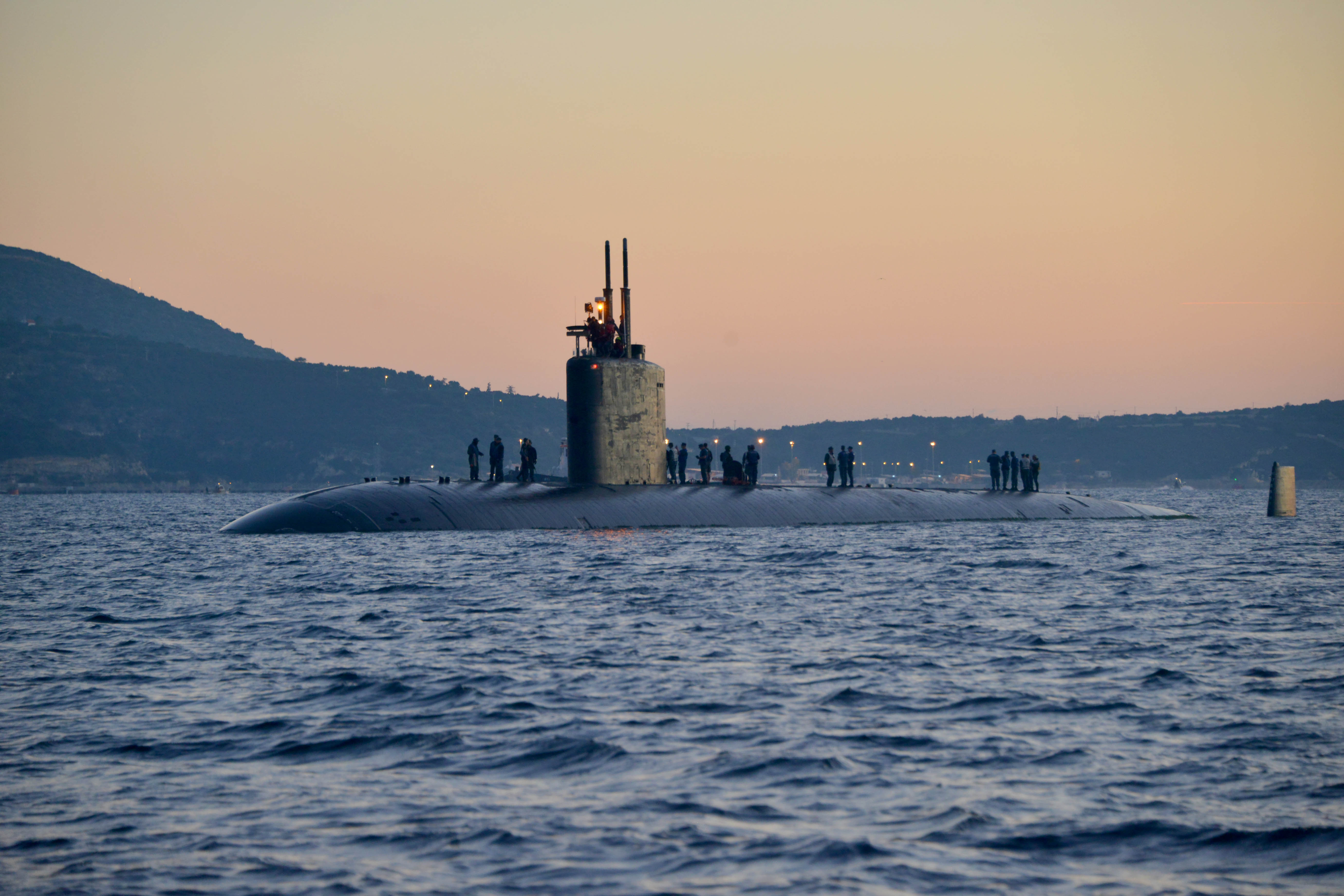
After years of struggling to conduct attack submarine maintenance – with the four public naval shipyards prioritizing SSN work last, behind a backlog of ballistic-missile sub and aircraft carrier work, and private shipyards finding it tough to resume submarine repair work after years of only doing new construction – the Navy appears back on track for its SSN maintenance, the head of Naval Sea Systems Command told USNI News.
The move of attack submarine USS Boise (SSN-764) to the dry dock at Newport News Shipbuilding in Virginia is the most visible sign of things moving in the right direction, after the sub has been sitting pier side at nearby Norfolk Naval Shipyard for more than four years waiting for maintenance to begin.
The Navy had previously hoped to get Boise into Newport News as early as 2018, but the private yard struggled with its first two Los Angeles-class SSN maintenance periods – for USS Helena (SSN-725) and USS Columbus (SSN-762) – and didn’t have the room for the sub or the workforce to start working on it. As Boise lingered, it became a focal point in the discussion about a lack of repair capacity and a backup of work at the four public naval shipyards.
But, NAVSEA Commander Vice Adm. Tom Moore told USNI News, the Navy is moving into a new era of on-time submarine maintenance.
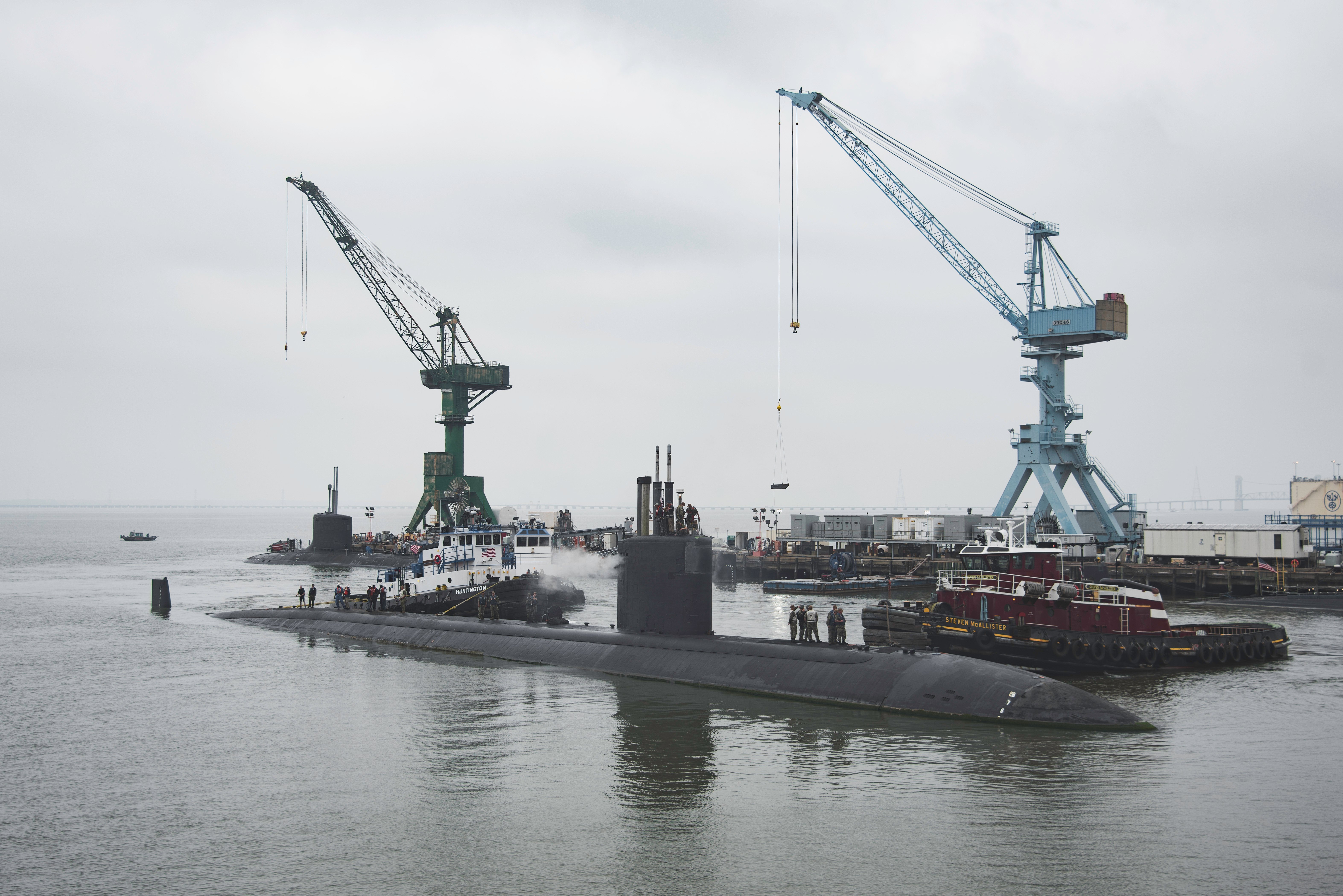
What went wrong with Boise?
Boise returned home from its last deployment in January 2015 and was set to start maintenance during Fiscal Year 2016. Instead, Norfolk Naval Shipyard was too backed up to take on the attack boat. Prioritized ahead of Boise was ballistic-missile submarine refueling, aircraft carrier maintenance, and a submarine conversion project to turn decommissioned submarines into Moored Training Ships to train new sailors to operate and maintain reactors at the Nuclear Power Training Unit.
The Navy then made plans to put Boise into a private yard repair at either General Dynamics Electric Boat or Newport News Shipbuilding, the two yards that build submarines – but neither yard had the capacity to do the work before FY 2019, USNI News reported in 2017.
Newport News ultimately won the contract but then saw additional delays due to challenges juggling two other repair contracts for Helena and Columbus.
Moore told USNI News in an interview last week that “I think we are well-positioned on Boise, certainly way better than we were on Helena and Columbus, when we learned so many lessons the hard way: that, one, they hadn’t done submarine work in 10 years, and I think we underestimated how they had atrophied in that skill set, and I think they did as well; and the other thing is, I think we recognized that we probably put too much on their plate, with multiple availabilities on their plate at one time.”
Moore made clear that the Newport News Shipbuilding workforce were experts in ship maintenance, saying they excel at the most complex ship maintenance work the U.S. Navy has ever done: refueling and overhauling aircraft carriers. But in the decade since the yard has done submarine repair work, he said they lost their expertise in some submarine-specific skills, specifically the documentation required under the SUBSAFE program that ultimately allows the Navy to certify the sub to dive again.
The Navy needs Newport News Shipbuilding to be a provider of submarine repair work, and the private yard lists increased sub maintenance work as part of its long-term plans, Moore said.
“I’m fully confident they can get the work done. They’re trying to grow that part of the business, and we’re interested in having them be a partner with us in that type of business because, one, it gives us some surge capacity at the naval shipyards if we need it, for instance like with Boise, or if heaven forbid we were to have a collision to go to war or something and needed capacity we couldn’t self-generate in the naval shipyards, it’s always nice to have somebody there that can do that for us,” he said.
The two partners just had to sort out some growing pains first before getting to this point, he acknowledged.
Improvements at Newport News Shipbuilding
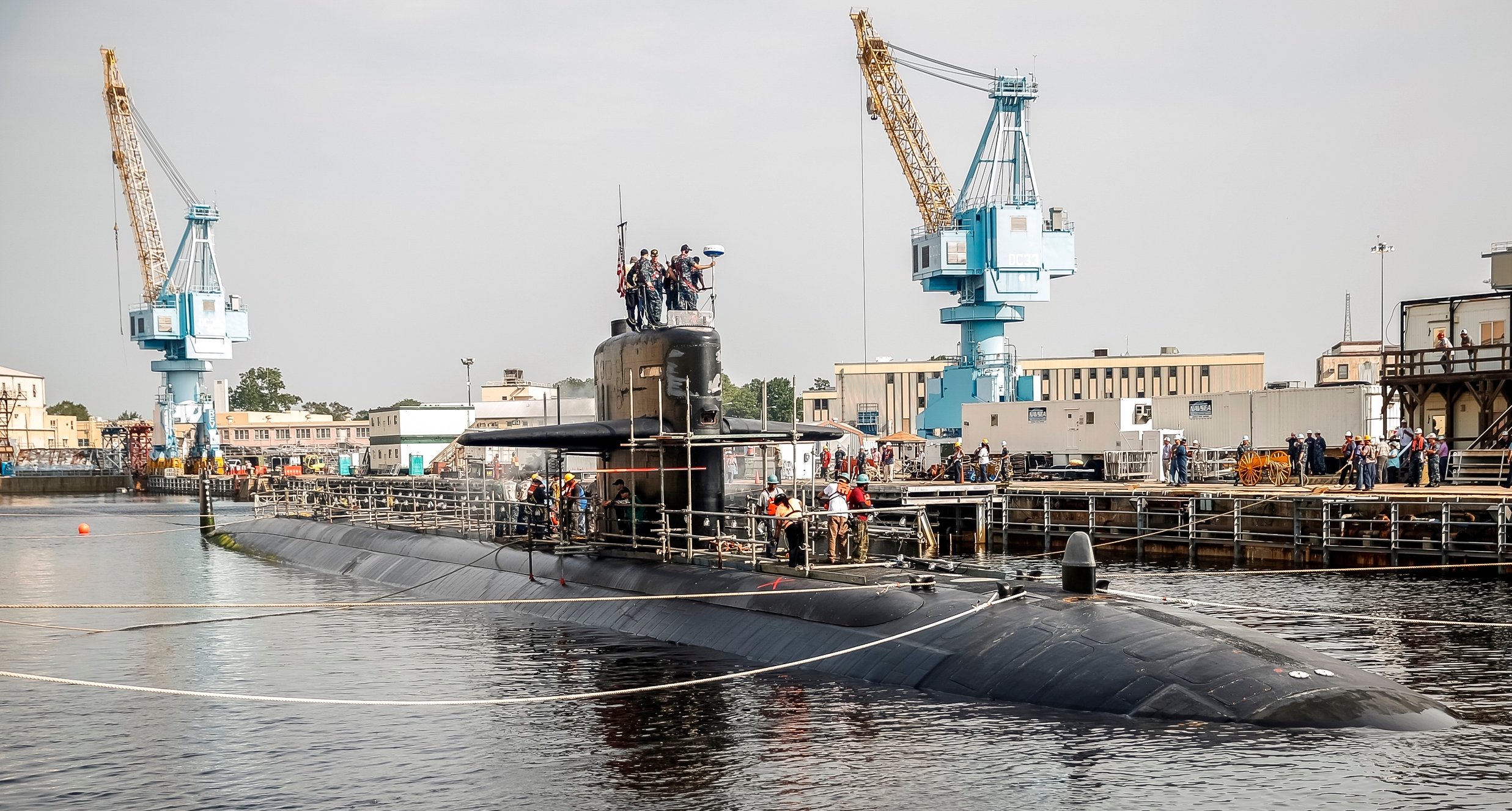
In December, Moore told reporters after a congressional hearing that Boise’s delay going into Newport News was due to delays in Helena and Columbus coming out of Newport News, which he attributed to “some basic fundamental blocking and tackling that they’ve got to get better at.” A Newport News official told USNI News on background that week that the private yard didn’t have the benefit of decades of lessons learned on LA-class submarine repair work: while the four public yards share best practices, lists of extra materials to keep on hand, likely growth work areas and more, Newport News wasn’t given any of that kind of information to inform its planning and execution on Helena and Columbus.
Moore acknowledged in last week’s interview that that had happened accidentally but that NAVSEA was taking a wholly different approach with Boise.
“We’ve made SUBMEPP [Submarine Maintenance Engineering, Planning and Procurement] available to show them the products that we use. We’ve made Portsmouth Naval Shipyard available. We’ve provided them all the documentation that we use when we’re getting ready to plan for a submarine availability, including integrated master schedules, resource-constrained schedules that show by trade, by time how many resources you would expect to see for a typical EOH (engineered overhaul), which is what Boise is. It really basically is to set them up to better expect what’s coming into the availability,” Moore said.
NAVSEA also beefed up the Supervisor of Shipbuilding (SUPSHIP) at Newport News and connected the yard with former project superintendents from the public yards who could help assist in the planning process. The NAVSEA 07 submarine lifecycle management organization is also spending quite a bit of time with Newport News, Moore said. And NAVSEA has helped the yard apply a contracting and planning model used on carrier RCOHs where each work item is broken up into the resources and cost needed, and the Navy and contractor agree to those along the way to reach a final contract that is as realistic as possible.
“All they had to do was ask, but we didn’t recognize until they started to do the work (on Helena and Columbus) that there was a basic fundamental – like I said, blocking and tackling – that they lacked. So some of this was just, we didn’t realize they needed the help. It was never on our side any intention of not providing the help, and as soon as they said they needed the help in this particular area, we opened up everything we had,” Moore said.
Newport News Shipbuilding spokesman Duane Bourne told USNI News that “we are focused on completing the maintenance availabilities of USS Helena (SSN-725) and USS Columbus (SSN-762) in late 2020 and the first half of 2022, respectively. Although these maintenance projects are of different magnitudes and complexities, there are some commonalities in the challenges we have faced. The three primary challenges were reconstituting our submarine maintenance capabilities that had been idle since 2009 (this work greatly differs from new construction), the need to grow additional and effectively balance engineering and production resources being split between maintenance availabilities that are being planned and executed concurrently, and the greater than anticipated hull-specific new growth work. We have addressed these issues and are making good progress on both of these availabilities.”
“We have demonstrated considerable learning and continuous improvement since reconstituting the submarine fleet support product line, which had been idle since 2009. We are committed to growing and building the workforce needed to support our submarine maintenance capabilities, and will continue to work with the Navy to keep pace with their current and forecasted volume of shipbuilding and maintenance needs,” he added.
Moore said that Electric Boat likely won’t be a provider of submarine maintenance for much longer – aside from an availability for USS Hartford (SSN-768) that starts in November 2021, the Connecticut yard will have its hand full with construction of Columbia-class SSBNs and Block V Virginia-class SSNs. Moore said it’s important to get the sub repair capability reconstituted at Newport News Shipbuilding so that one private yard can serve as part of the SSN repair community.
His ultimate vision for Newport News Shipbuilding’s role– based on recent lessons learned – would be that the Virginia yard always has one submarine in planning and one in execution, but never more than one in each phase, lined up heel to toe. And the private yard might cease working on the Los Angeles-class SSNs and instead only do Virginia-class work. Moore said the Virginia subs are newer and that the current workers at Newport News Shipbuilding are more familiar with the design since that’s what they’ve been building at the yard. Portsmouth and Norfolk naval shipyards might do the remaining LA-class boats as they near the end of their lives, Moore said, though a final decision has not been reached.
“We’re looking for a plan that makes everybody as successful as we can, so that’s certainly something we’re thinking about,” he noted.
Boise’s Future
Moore said the 18 months between when Boise was supposed to come over to Newport News Shipbuilding and when it actually made the move weren’t wasted. The Navy and industry team used that time to do inspections and get a good idea of the ship’s condition and the scope of work that will have to be done during the upcoming overhaul.
“I feel good at this point. If we didn’t feel good four years later, shame on us. We’ve at least learned the hard lessons from Columbus and from Helena and we’ve had some time to get in and inspect the material condition of the boat, and we have taken lessons learned from the other EOHs. So I think the work package we have coming in on Boise is pretty complete, and we’re going to have some things – she’s in dry dock at Newport News now, which will allow us to get in and look at some of the things you couldn’t look at waterborne, some of the ballast tanks and things, but we’ve got a pretty detailed history on Los Angeles-class submarines, so we have a pretty good idea with a high degree of confidence what work is out there,” Moore said.
A key lesson learned from Helena and Columbus is that the work package should be pretty well defined before a contract is signed – something that’s pretty fundamental to ship repair, but hadn’t been executed well as SSN availabilities were delayed and moved around over and over.
With Helena and Columbus, “it was more of a, hey, let’s get it in there, let’s get started, and as we get growth we’ll manage it as we go. That’s always a strategy that doesn’t work well, in my book. You’re always going to have some growth work, but the better you can define the work that you have to do up front, the better you’re going to be, for a couple reasons. One, you know what the cost and schedule are likely to be, you’re not going to be surprised. Two, if you really have a better idea of what the scope is looking like, then you know whether you’ve got the capacity to match that scope of work,” the admiral said, adding that that capacity applies to both the maintenance workforce to do the repairs and also the engineering workforce to handle the SUBSAFE requirements.
The two subs already at Newport News will have lengthy availabilities: Helena won’t deliver until early this fall after going into the yard in October 2017 – three years for what was meant to be a six-month docking selected restricted availability. Columbus won’t come out until late 2021 or early 2022, Moore said, after entering in July 2017 and planning for an August 2019 end of the EOH.
Moore said an EOH on an attack sub would take about 25 months at Portsmouth Naval Shipyard, which specializes in this kind of submarine repair work. Columbus will ultimately be about four and a half years, as Newport News went through the growing pains of reconstituting this capability. Moore said he hoped to get Boise down to about 30 months – which he acknowledged might be a stretch goal, but he said that’s what he hoped to see come out of the contract negotiations between the yard and the Navy.
Better Balance of Supply and Demand at Public Yards
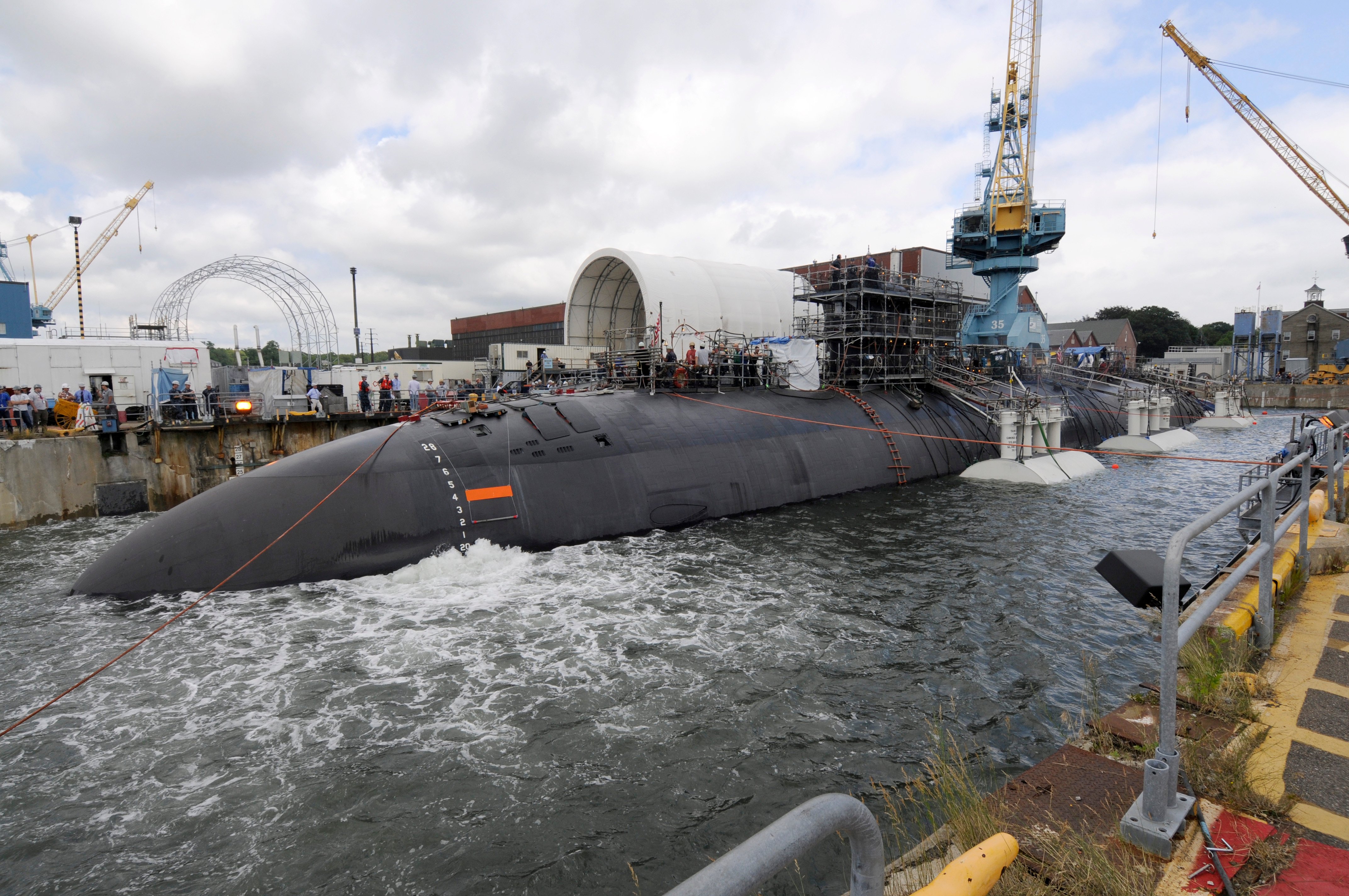
Moore acknowledged that the bulk of the Navy’s problems in recent years was that its four public shipyards, tasked with maintaining nuclear-powered submarines and aircraft carriers, did not have the capacity to keep up with demand.
The workforce across the yards dropped after sequestration and budget controls wracked the Navy maintenance budget, with many of the workers left at the yards having less experience than those who retired and weren’t replaced in recent years.
Beyond the sheer number of people doing the work, “basically, the two big yards, the carrier yards, Puget and Norfolk, haven’t been doing SSN maintenance. … They’ve been just focused on SSBN refueling.”
The last SSN availability done at one of those yards turned into another poster child for the Navy’s SSN maintenance woes: USS Albany (SSN- 753) went in for a two-year maintenance availability and was stuck at Norfolk Naval Shipyard for four years because not enough resources could be devoted to getting the sub out on time.
Moore said that, finally, Puget and Norfolk are on their final SSBN refueling each. USS Wyoming (SSBN-742) will wrap up at Norfolk by the end of this summer, and then Puget will finish the very last refueling with USS Louisiana (SSBN-743).
Also weighing Norfolk down is the Moored Training Ship conversion program, which Moore said would deliver the final training ship around June 2021.
At that point, Moore said, “Norfolk will just be carrier work, so we’re on plan to start bringing submarines back in,” with the same planned for Puget as well.
“And as we build more Virginia-class submarines, we’ll eventually start bringing more submarine work back in. And the fact that you don’t have SSBN refueling overhauls to work on means that, in terms of the priority at the naval shipyards, we shouldn’t see the SSNs taking a backseat. Remember, a lot of the reason they took the backseat is because we just didn’t have the capacity at the naval shipyards to begin with. So we’ve grown from, in the four years I’ve been in the job, from 33,000 up to 36,700 people. So we now have the capacity to do all the work that’s assigned to us, and that’s going to reflect in on-time delivery across the board, whether it’s carrier work or SSNs,” he added.
A Backlog-Free Future?
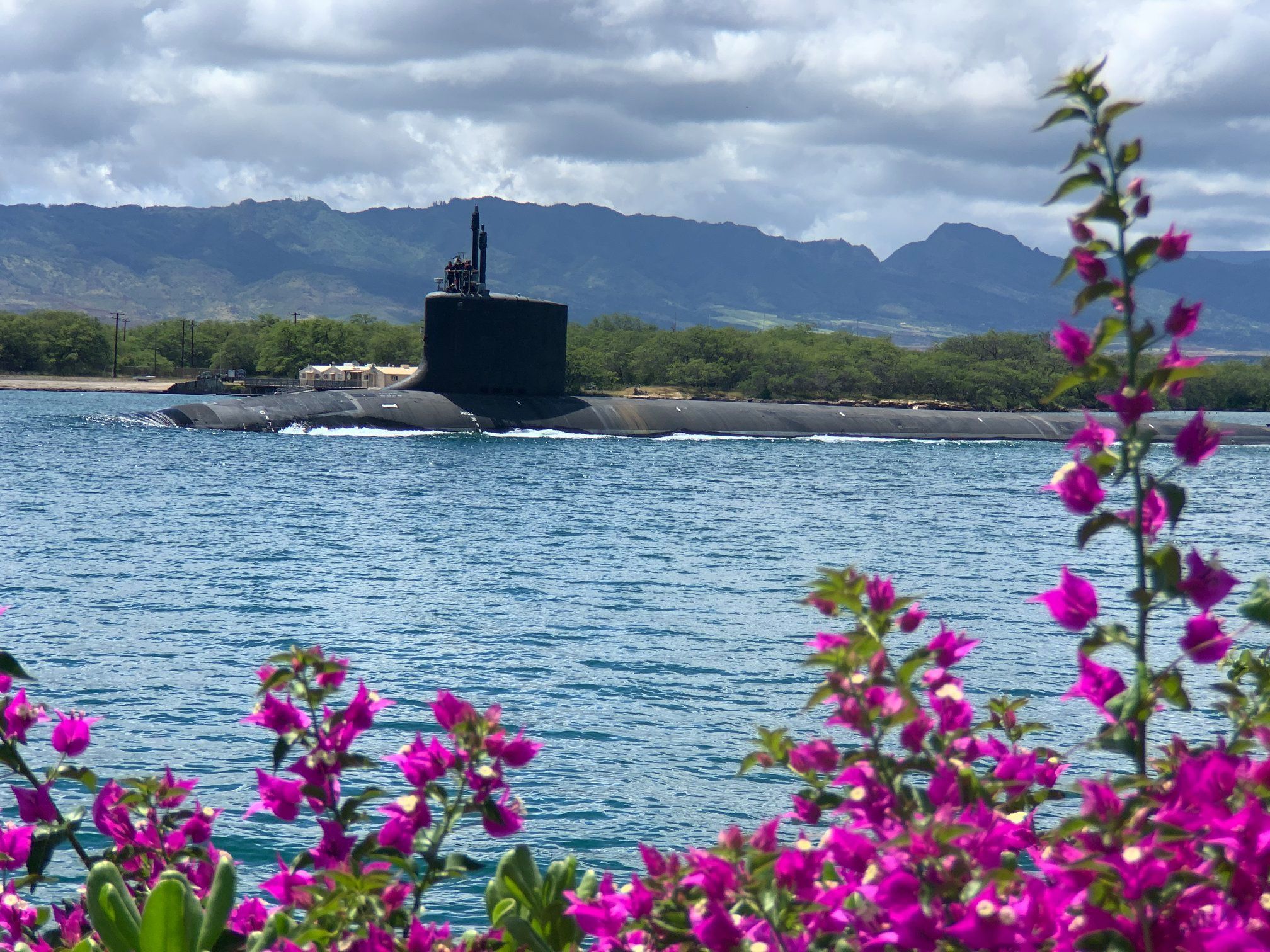
If the plan can be executed, Moore said the anticipated work at Norfolk Naval Shipyard matches the workforce capacity, meaning there should be no more backlog.
“The totality of work at Norfolk Naval Shipyard, there’s a good level plan out in the [five-year Future Years Defense Program],” he said.
“Once you take the Moored Training Ship work and SSBN [Engineered Refueling Overhaul] work away, we’ll fill that in with SSN work to maintain a pretty stable and steady level of work.”
In 2017, Moore told USNI News that the yards had inherited a hefty backlog of work that year but that rising capacity would help them chip away at that work and eventually stop adding to the backlog by FY 2020 – the current fiscal year.
“The SSNs have really been the Achilles’ heel, and that starts with capacity,” Moore said three years ago.
“The SSNs is really where I would expect, as we head into Fiscal Year 2018 and ‘19 and ‘20, they are going to be the ones that gain the most benefit of adding capacity at the shipyards.”
Though Boise has remained a “problem child” for longer than anticipated, Moore noted in the recent interview that SSN maintenance is wrapping up on time more and more as capacity at the public yards grows.
Making his point, Pearl Harbor Naval Shipyard & Intermediate Maintenance Facility (PHNSY & IMF) announced on May 21 that it had completed USS Missouri (SSN-780) five days early, marking “the first time any shipyard has completed two consecutive Virginia-class extended dry-docking selected restricted availabilities (EDSRA) ahead of schedule” after USS North Carolina (SSN-777) completed its EDSRA two days early on Dec. 1, 2018.
In fact, whereas Moore had told USNI News in 2017 that he thought improvements would lead to the maintenance backlog being eliminated by 2023, he told USNI News last week that NAVSEA was on track to have no more backlog by the end of FY 2021.
Moore said he was confident NAVSEA was in a good position on SSN maintenance because a whole set of improvements had been made in tandem in recent years: not only was the workforce now up to its goal of 36,700 personnel, but an effort to create better business practices is underway and the first projects in a 20-year Shipyard Infrastructure Optimization Plan (SIOP) program are already hitting the waterfront.
Last summer the Navy kicked off a Naval Sustainment System-Shipyards initiative to look at the business practices that support ship maintenance, modeled after a very successful NSS-Aviation effort that helped Naval Air Forces reach 80-percent readiness rates and higher in the fighter jet fleet. Moore said a contract would be awarded this summer for NSS-S, with a company selected to help improve business practices over the long term. And though the SIOP is a long-term plan that will require about $21 billion in funding over 20 years, Moore said an early project at Pearl Harbor to replace a Los Angeles-class dry dock with a new one for modern Virginia-class subs – as well as a production facility on the waterfront that will move all shops and engineering spaces closer to the dry dock where repairs take place – will create a “dramatic improvement” in productivity there.
“We’re trying to get out of the mentality of setting priorities within naval shipyards, because my experience has been, if you make something priority three or four, all that means is it’s going to be late. We set priorities in a time when we just didn’t have capacity to work on everything. And so I think that mindset has changed. On-time delivery of ships and submarines has been mission priority number-one in my entire four years, and I think we’ve grown the capacity at the naval shipyards now, we’ve done a number of things in the shipyards to improve productivity, we’ve working through this Naval Sustainment Shipyard to bring in some help to go look at how we can transform the business processes at the naval shipyards. And then I’m really proud of the work we’ve done on SIOP because that complements all the work –you can have the right numbers of workers, but if you really want to take that next step to being more productive and delivering everything on time, you’ve got to make the needed investments in the infrastructure to support that,” Moore said.
“I don’t think you can look at them individually, you have to go look at them in totality. You have to do all three of them.”





